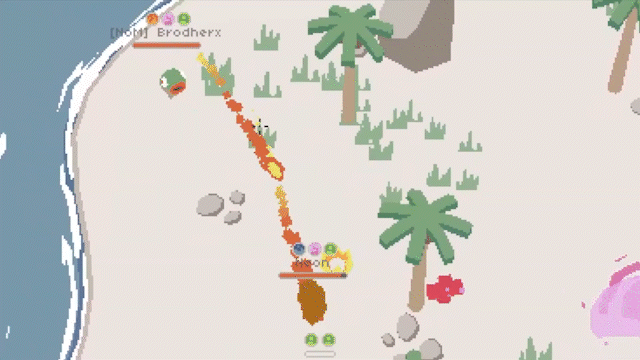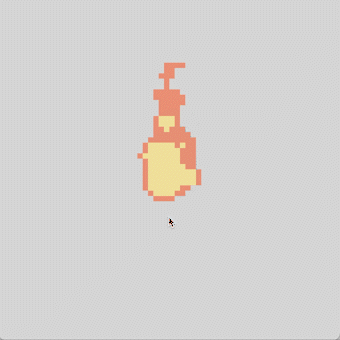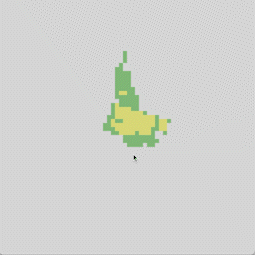intro
or just go directly to the:
STOREPAGE B)
I developed this game on full time with friends during a gap year. It is the biggest, and most difficult project I have worked on so far. Except for basic programming knowledge and general design experience, we learned the necessary skills on the way.
the _game

Fishards is an online multiplayer, top down, arena battle game. You play as fish-wizards with legs combatting on islands with magic spells.
team
my_role
I lead the art direction. My main work was game design, visual design, 3d modeling, animation and vfx, but since the biggest work-load was programming I assisted in that as well. Together we also developed a game company, marketed and sold the game.
animation
The 3d modeling and animation was done in blender 3d which was a program I learned on the way.
vfx


Since the game is mainly characters fighting, a lot of the visual design work was centered around visual effects (vfx). This work was closely linked to all other aspects of the design. Animations, effect timing, colors, sound effects, environment-contrast, collision-code all had to be coordinated to get a good "game feel".
This form of interaction design was a big challenge that I did not anticipate. I initially thought vfx was "making cool magic effects" but it I quickly discovered the importance of the game's ability to communicate what is happening. If it wasn't clear what your enemies are doing, have done, or are about to do, you feel cheated and unsatisfied and the whole game falls apart. I learned that game development is a lot about making simple mundane tasks, like pressing a button, interesting, satisfying and fun.
game_design
In the beginning all the game design was done within the team. The main process for all features was: planning -> discussing -> implementing -> testing -> evaluating (->) altering.
After approximately half a year, a working demo was published and we started developing a community to get better feedback from our users. This community grew large and a lot of the game design could be evaluated and tested by many people.
programming
The first demo was developed with C# in Unity, together with a server in C#. It was later rebuilt to go from a client-server network structure to peer-2-peer for cheaper scaleability. During the rebuilding we switched engine to Godot that uses a python-based scripting language. I learned both of these programming languages, along with HLSL for gpu (shader) programming, throughout the project.
result
The game was published and is sold on Steam. We have sold approximately 900 copies which isn't exactly a financial success for the hours put in, but we are very happy with that. We learned how to develop and publish a game from scratch, and I think we did a great job. We have gotten a lot of positive feedback, 300/900 players are part of our active community on discord, and 98% of all reviews are positive. I think we managed to make a fun game that you should definitely try!